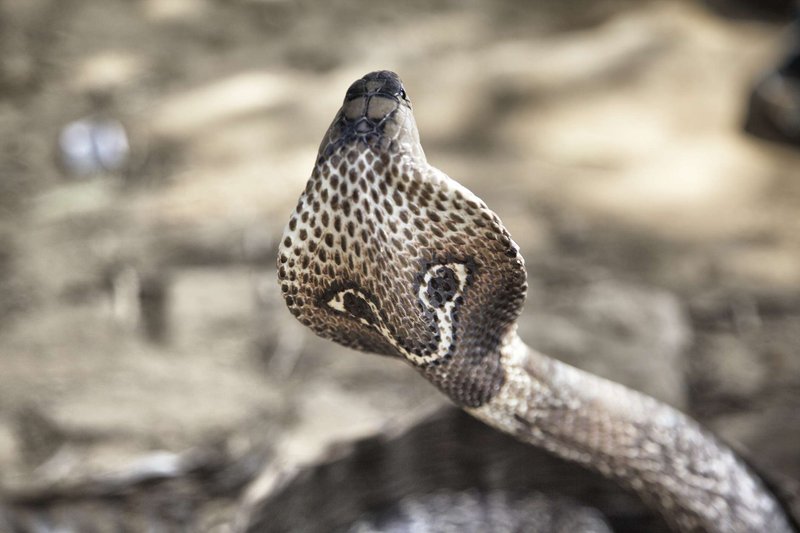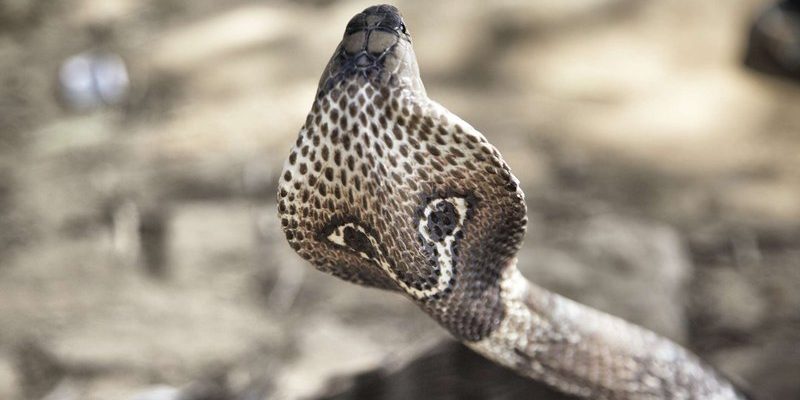
But how do you spot a king cobra amid the dense foliage and other wildlife? Let me explain. Identifying these snakes requires a good understanding of their physical traits, behavior, and habitats. Think of it as being on a treasure hunt, where the treasure isn’t gold, but the chance to witness one of nature’s most extraordinary creatures.
Let’s dive into some key features and tips for identifying a king cobra in the wild.
Recognizing King Cobra Physical Characteristics
To spot a king cobra, start by familiarizing yourself with its physical traits. King cobras typically measure between 10 to 13 feet long, with some exceptional individuals reaching up to 18 feet. Their bodies are slender, but they make up for length with a distinctive, elongated shape.
They have a unique color pattern that varies by region. Most commonly, you’ll see a combination of olive green, yellow, or even black scales, with lighter bands or crossbands. Their hood is perhaps the most striking feature; when they feel threatened, they can expand it dramatically, showcasing a series of dark markings. This behavior isn’t just for show; it serves as a warning to potential predators or threats.
Another notable aspect is their eyes. King cobras typically have large, round pupils, and their scales are smooth. If you spot a long, slender snake with these features, your heart might skip a beat—you just might be looking at a king cobra!
Understanding Their Behavior
You might be wondering how a snake behaves in the wild. Understanding king cobra behavior is crucial for identification, especially when considering their habitat and temperament. Unlike many other snakes that prefer to stay hidden, king cobras are quite bold. They often bask in the sun or slither through dense vegetation.
When threatened, a king cobra will not back down easily. They exhibit a striking defensive posture, lifting a significant part of their body off the ground. This behavior can give you a heads-up that you’re looking at a king cobra, especially if you notice the hood’s expansion.
It’s important to note that while king cobras are venomous, they often avoid confrontation. They would rather retreat than engage unless they feel cornered. So, if you encounter one, stay calm, back away slowly, and give it space to move.
Typical Habitats of King Cobras
Identifying a king cobra also involves knowing where they like to hang out. These snakes thrive in a variety of habitats, from dense forests to rainforests and even mangroves. They are particularly fond of areas near water, such as rivers and swamps, as these habitats provide them with both food and shelter.
The king cobra’s range extends through Southeast Asia, including countries like India, Thailand, and Indonesia. When searching for these snakes, look for signs such as shed skins or rodent holes, which indicate their presence. If you’re hiking through their territory, keep an eye out for any movement in the underbrush.
How to Observe Safely
If you plan to identify a king cobra in the wild, safety should be your priority. It’s essential to approach this task with caution and respect. Here are some tips for safe observation:
- Stay Alert: Always be aware of your surroundings and watch for any sudden movements.
- Maintain Distance: Use binoculars or a camera with a zoom lens to observe from a safe distance.
- Wear Protective Gear: If you’re venturing into areas known for snakes, consider wearing thick boots and long pants.
- Travel in Pairs: There’s safety in numbers, so it’s always better to explore with a buddy.
Following these tips ensures you can appreciate the beauty of a king cobra without putting yourself in harm’s way.
Using Visual Cues for Identification
When it comes to recognizing a king cobra, paying attention to visual cues is key. Besides their size and color, note their unique markings. These can vary significantly based on region, which is why it’s useful to familiarize yourself with local variations.
For example, some king cobras may exhibit darker shades or distinct patterns based on their environment. If you spot a king cobra in Southeast Asia, it’s likely to have a more vibrant coloration compared to those found in India, where they may blend more with their surroundings.
Also, take note of the way they move. King cobras tend to glide smoothly through their environment, their long bodies undulating as they navigate through tall grass or forest floor litter. This movement is different from the more abrupt actions of other snake species, giving you another clue.
Respecting King Cobras and Their Ecosystem
While learning to identify a king cobra can be exciting, it’s crucial to remember the importance of respecting their role in the ecosystem. These snakes help control rodent populations, which can prevent other wildlife from becoming overpopulated. Understanding their behavior and habitat can help you appreciate their place in nature.
If you encounter a king cobra, it’s best to observe from a distance and refrain from disturbing it. Not only for your safety but also for the wellbeing of the snake. Leaving wildlife undisturbed is vital for conservation efforts.
Identifying a king cobra in the wild can be an exhilarating experience. With its striking size, unique markings, and bold behavior, it’s a creature that embodies the wild’s mystery. As you venture into their habitats, remember to keep safety in mind and respect these magnificent snakes.
By knowing what to look for—physical traits, behavior, and habitat—you’ll enhance your chances of spotting a king cobra while ensuring a safe and respectful encounter. Keep your eyes peeled and enjoy the adventure of nature!

